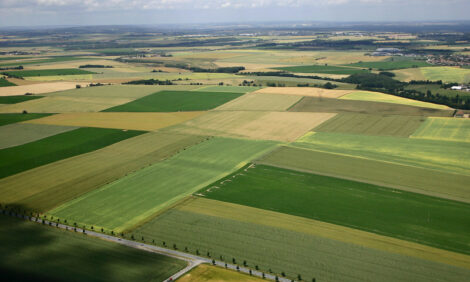



IBR Vaccine Programme Offers Simplicity
UK - Protection from IBR for up to 12 months is available to beef and dairy farmers using a new vaccination programme.In cattle over three months of age, step one is a single intramuscular dose of Rispoval® IBR
Marker Live vaccine. Six months later, step two requires either another dose of the same for
six months further protection, or a single dose of Rispoval IBR Marker Inactivated vaccine for
a 12 month protection period.
Thereafter, the programme is maintained with a single dose annual booster of inactivated
vaccine, or a six-monthly booster with the live one. The programme is made possible by a
recently approved update to the live vaccine’s product licence.
According to Pfizer National Veterinary
Manager Carolyn Hogan, the new protocol
can apply equally to an entire herd where
IBR vaccination is being introduced for the
first time, or to replacement heifers before
they join the milking herd for the first time.
“Compared with previously available
programmes involving live and inactivated marker vaccines, the new one simplifies IBR
vaccination for beef and dairy farmers at the same time as extending protection for up to 12
months,” she says.
Over the past nine months in South Wales, vet Rob Davies at Allen & Partners in Whitland
has found 75–80 per cent of herds positive for IBR, based on bulk milk antibody surveillance
in client herds. Over England and Wales as a whole, a 1998 paper in The Veterinary
Record reported that 69 per cent of dairy herds were seropositive, since when Mr Davies suggests
the figure is much more likely to have risen than subsided. And a study reported in 2009
identified that 96 per cent of dairy herds in south west England contained at least one sero-positive
animal.
Prompted by his practice’s surveillance, Mr Davies has introduced an IBR control initiative
to clients involving live IBR vaccine initially for the entire herd, including breeding bulls,
followed by inactivated vaccine at the manufacturer’s recommended intervals, with
dramatic results.
At one large scale dairy unit, Mr Davies reports a two litres/cow/day yield increase which he
believes is attributed directly to the programme. Before its introduction, he says a dedicated
sick-cow stockman was spending three to four hours a day attending to 35–40 per cent of freshly
calved cows at any one time. Following adoption of the IBR protocol, Mr Davies reports that
this reduced quickly to about one hour a day. He says the incidence of displaced abomasums
fell from one a week to one a month, and a marked increase in conception rates from 27 to
38 per cent has been recorded. Independently, evidence has been reported that BHV-1 – the virus responsible for IBR – can cause immuno-suppression.
The vaccines employed by Rob Davies are ‘Rispoval® IBR-Marker Live’ and ‘Rispoval® IBR-
Marker Inactivated’ and he has developed a layman’s explanation for clients of how they
work in combination: “I believe each vaccine does a different job,” he explains. “In cows that
have never been infected – what scientists and vets call ‘naïve’ animals – the live vaccine
fools them into thinking they have been infected and stimulates the immune system to
create protection against a subsequent real infection.
“In cattle already carrying the virus, the inactivated vaccine is more effective than a live
one at stimulating protection in the face of the virus’s re-emergence from dormancy. Stress
factors known to trigger this can include calving, changing groups, change of diet, heat stress
and other infectious or metabolic diseases.”
In effect, Mr Davies tells farmers that live vaccine mainly protects against animal-to-animal
transmission, while inactivated vaccine offers protection in the face of re-activation within
the same animal. He adds that inactivated vaccine has also been shown to be more effective
than live at reducing viral shedding by IBR carrier animals, thereby reducing infection
pressure on naïve herd mates.
Pfizer Animal Health says the new IBR vaccine programme is available now from veterinary
practices.
TheCattleSite Newsdesk


